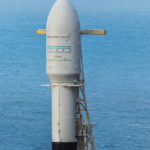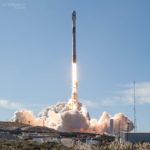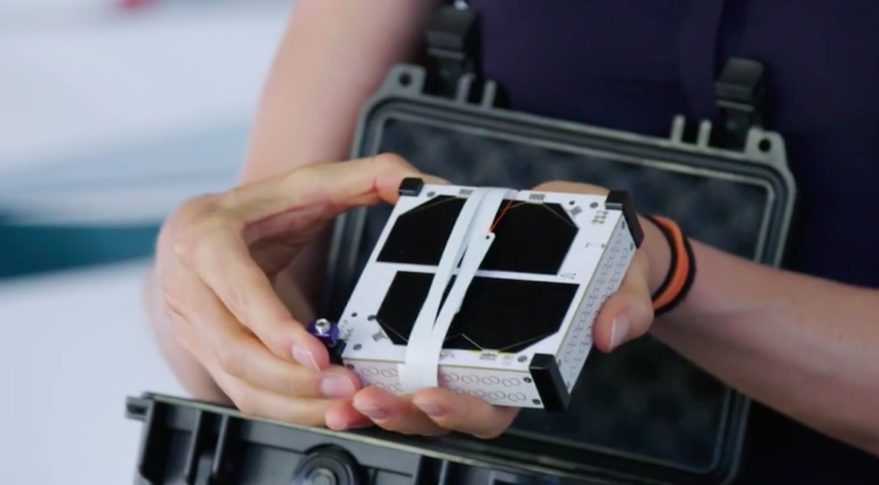
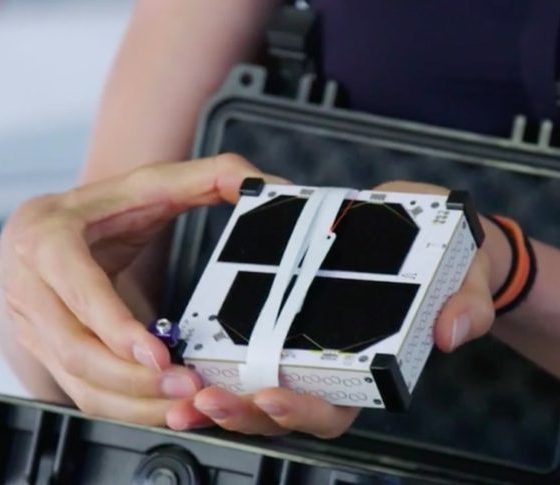
News
Startup fined $900k for launching illegal satellites, points to future space law challenges
Swarm Technologies, Inc., a satellite startup aiming to create the world’s lowest-cost satellite network, has been fined $900,000 by the U.S. Federal Communications Commission (FCC) for illegally launching and deploying four unauthorized satellites into orbit in January 2018 on a commercial Indian satellite launch vehicle. The satellites in question were Swarm’s SpaceBEE vehicles, which measure one quarter the size of a traditional CubeSat, a class of small satellites measuring 10 cm in height, width, and depth. In December 2017, the FCC deemed the SpaceBEE size too small for the U.S. Air Force’s traditional technology to track with routine methods and declined a license, but the satellites were placed into orbit regardless. With satellite and rocket launch startups proliferating as space access becomes more affordable, the debate over ensuring safety in this international arena is likely expand.
Swarm requested an experimental license from the FCC in April 2017, a first step for any satellite operator to ensure compliance with current international space laws, and their plan was to launch in September 2017, although that date was later delayed. Spaceflight Industries was next hired to connect Swarm with a launch provider and ensure its integration with the rest of the rocket’s payload. After the FCC declined the license in December 2017, Swarm applied for a new license in January 2018 for satellites meeting CubeSat specifications, but the original SpaceBEEs were already loaded onto the contracted Indian Polar Satellite Launch Vehicle (PSLV) and subsequently launched on January 12, 2018.
When news of the SpaceBEE deployment broke, concerns over regulatory backlash spread throughout the satellite community. The FCC issued an Enforcement Advisory on April 12, 2018 warning about consequences for communications companies failing to comply with licensing requirements, including a note to launch providers on how launch activities may be impacted if an unauthorized satellite payload needs to be removed. In a decision released December 20, 2018, Swarm Technologies was ordered to pay the fine and implement a five-year compliance plan.
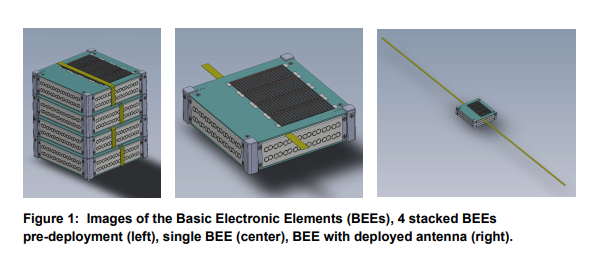
Since the very first satellite was successfully launched by the Soviet Union on October 4, 1957, activities in space have been largely conducted by national governments and companies affiliated with them. However, the new space era is quickly changing that environment, rapidly opening up the beyond-Earth domain to private citizens. Billionaires like Elon Musk of Tesla and SpaceX, Jeff Bezos of Amazon and Blue Origin, and Richard Branson of Virgin and Virgin Galactic have mostly been the face of private/commercial space industry in recent years, but the technologies they’ve developed are also ushering in a new wave of affordable access to space, and with it, new technologies that don’t fit the traditional mold of “old space”.
The legal foundation for current space laws is the 1967 Treaty on Principles Governing the Activities of States in the Exploration and Use of Outer Space, including the Moon and Other Celestial Bodies, i.e., the “Outer Space Treaty”. Under this Treaty and subsequent treaties and laws arising from it, states, or nations, rather, are responsible for any space activities conducted by their own nationals, meaning a regulatory process that must be enforced. Where access to space was once expensive and difficult, the significantly lowered threshold has brought in a field full of players ready to take their shot at participating in the coming space economy and maybe, as seen with Swarm Technologies, even take a few risks to get there.
While the illegal launch of Swarm’s satellites was caught rather quickly (first by the community of amateur space trackers) and action was taken to penalize it, what’s to stop nations in the future from lowering standards to attract private customers? As stated in the FCC’s Enforcement Advisory, “Satellites authorized by an administration other than the United States do not require any FCC approval if Earth station operations are exclusively outside the United States.” Pressure from the international community to comply with treaties will only work to the extent that 1) the penalties deter the profit potential from the industry; 2) the international community agrees the activity is actually unsafe; and 3) the resistance to reforming regulations to permit the activity in question is deemed justified. Innovation, especially out of Silicon Valley, has a history of breaking rules to bring about significant change; however, some would argue that space isn’t the place for that approach.
- The thrice-flown, Falcon 9 Block 5 rocket that put Swarm’s recent 3 satellites in orbit (all FCC approved): SpaceBEE-5, 6, and 7. | Credit: Pauline Acalin
The thrice-flown, Falcon 9 Block 5 rocket that put Swarm’s recent 3 satellites in orbit (all FCC approved): SpaceBEE-5, 6, and 7. | Credit: Pauline Acalin
The problem seems to be a simple matter of ethics: Don’t launch things into space that aren’t safe for Earth’s occupants. But according to the FCC, Swarm’s proposed satellites were merely “below the size threshold at which detection by the Space Surveillance Network (SSN) can be considered routine.” The licensing issue seemed to generally only be safety-related because of the satellites’ irregularity, not from the lack of actual tracking capability, something that is only going to increase as more players enter the new space arena.
Another point worth consideration is that Swarm’s SpaceBEE satellites are actually trackable using the same SSN network the FCC cited in its rejection of Swarm’s license request, and live tracking is ongoing via an independent tracking service called LeoLabs. According to Dr. Sara Spangelo, one of the co-founders of Swarm Technologies, the satellites are equipped with radar retro-reflector technology, something developed by a US-Navy research and development lab, which makes their radar signature as bright as a CubeSat. The FCC has also granted the company a temporary experimental authorization to test the previously-illegal satellites’ orbital and tracking data. Thus, the question for the future is not so much whether the safety concerns are valid, but whether preventative rules will be waived where newer technology can demonstrate their compliance outside traditional standards.

News
Elon Musk’s Grokipedia surges to 5.6M articles, almost 79% of English Wikipedia
The explosive growth marks a major milestone for the AI-powered online encyclopedia, which was launched by Elon Musk’s xAI just months ago.

Elon Musk’s Grokipedia has grown to an impressive 5,615,201 articles as of today, closing in on 79% of the English Wikipedia’s current total of 7,119,376 articles.
The explosive growth marks a major milestone for the AI-powered online encyclopedia, which was launched by Elon Musk’s xAI just months ago. Needless to say, it would only be a matter of time before Grokipedia exceeds English Wikipedia in sheer volume.
Grokipedia’s rapid growth
xAI’s vision for Grokipedia emphasizes neutrality, while Grok’s reasoning capabilities allow for fast drafting and fact-checking. When Elon Musk announced the initiative in late September 2025, he noted that Grokipedia would be an improvement to Wikipedia because it would be designed to avoid bias.
At the time, Musk noted that Grokipedia “is a necessary step towards the xAI goal of understanding the Universe.”
Grokipedia was launched in late October, and while xAI was careful to list it only as Version 0.1 at the time, the online encyclopedia immediately earned praise. Wikipedia co-founder Larry Sanger highlighted the project’s innovative approach, noting how it leverages AI to fill knowledge gaps and enable rapid updates. Netizens also observed how Grokipedia tends to present articles in a more objective manner compared to Wikipedia, which is edited by humans.
Elon Musk’s ambitious plans
With 5,615,201 total articles, Grokipedia has now grown to almost 79% of English Wikipedia’s article base. This is incredibly quick, though Grokipedia remains text-only for now. xAI, for its part, has now updated the online encyclopedia’s iteration to v0.2.
Elon Musk has shared bold ideas for Grokipedia, including sending a record of the entire knowledge base to space as part of xAI’s mission to preserve and expand human understanding. At some point, Musk stated that Grokipedia will be renamed to Encyclopedia Galactica, and it will be sent to the cosmos.
“When Grokipedia is good enough (long way to go), we will change the name to Encyclopedia Galactica. It will be an open source distillation of all knowledge, including audio, images and video. Join xAI to help build the sci-fi version of the Library of Alexandria!” Musk wrote, adding in a later post that “Copies will be etched in stone and sent to the Moon, Mars and beyond. This time, it will not be lost.”
News
Tesla Model 3 becomes Netherlands’ best-selling used EV in 2025
More than one in ten second-hand electric cars sold in the country last year was a Tesla Model 3.

The Tesla Model 3 became the most popular used electric car in the Netherlands in 2025, cementing its dominance well beyond the country’s new-car market.
After years at the top of Dutch EV sales charts, the Model 3 now leads the country’s second-hand EV market by a wide margin, as record used-car purchases pushed electric vehicles further into the mainstream.
Model 3 takes a commanding lead
The Netherlands recorded more than 2.1 million used car sales last year, the highest level on record. Of those, roughly 4.8%, or about 102,000 vehicles, were electric. Within that growing segment, the Tesla Model 3 stood far ahead of its competitors.
In 2025 alone, 11,338 used Model 3s changed hands, giving the car an 11.1% share of the country’s entire used EV market. That means more than one in ten second-hand electric cars sold in the country last year was a Tesla Model 3, Auto Week Netherlands reported. The scale of its lead is striking: the gap between the Model 3 and the second-place finisher, the Volkswagen ID3, is more than 6,700 vehicles.
Rivals trail as residual values shape rankings
The Volkswagen ID.3 ranked a distant second, with 4,595 used units sold and a 4.5% market share. Close behind was the Audi e-tron, which placed third with 4,236 registrations. As noted by Auto Week Netherlands, relatively low residual values likely boosted the e-tron’s appeal in the used market, despite its higher original price.
Other strong performers included the Kia Niro, the Tesla Model Y, and the Hyundai Kona, highlighting continued demand for compact and midsize electric vehicles with proven range and reliability. No other model, however, came close to matching the Model 3’s scale or market presence.
News
Tesla Model Y Standard Long Range RWD launches in Europe
The update was announced by Tesla Europe & Middle East in a post on its official social media account on X.

Tesla has expanded the Model Y lineup in Europe with the introduction of the Standard Long Range RWD variant, which offers an impressive 657 km of WLTP range.
The update was announced by Tesla Europe & Middle East in a post on its official social media account on X.
Model Y Standard Long Range RWD Details
Tesla Europe & Middle East highlighted some of the Model Y Standard Long Range RWD’s most notable specs, from its 657 km of WLTP range to its 2,118 liters of cargo volume. More importantly, Tesla also noted that the newly released variant only consumes 12.7 kWh per 100 km, making it the most efficient Model Y to date.
The Model Y Standard provides a lower entry point for consumers who wish to enter the Tesla ecosystem at the lowest possible price. While the Model 3 Standard is still more affordable, some consumers might prefer the Model Y Standard due to its larger size and crossover form factor. The fact that the Model Y Standard is equipped with Tesla’s AI4 computer also makes it ready for FSD’s eventual rollout to the region.
Top Gear’s Model Y Standard review
Top Gear‘s recent review of the Tesla Model Y Standard highlighted some of the vehicle’s most notable features, such as its impressive real-world range, stellar infotainment system, and spacious interior. As per the publication, the Model Y Standard still retains a lot of what makes Tesla’s vehicles well-rounded, even if it’s been equipped with a simplified interior.
Top Gear compared the Model Y Standard to its rivals in the same segment. “The introduction of the Standard trim brings the Model Y in line with the entry price of most of its closest competition. In fact, it’s actually cheaper than a Peugeot e-3008 and costs £5k less than an entry-level Audi Q4 e-tron. It also makes the Ford Mustang Mach-E look a little short with its higher entry price and worse range,” the publication wrote.
